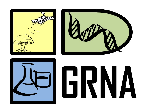Banca de DEFESA: GLEICE ELEN LIMA MACHADO
Uma banca de DEFESA de MESTRADO foi cadastrada pelo programa.DISCENTE : GLEICE ELEN LIMA MACHADO
DATA : 25/02/2019
HORA: 09:00
LOCAL: Auditório NTB - PROPPIT
TÍTULO:
COMPARISON BETWEEN THE STRUCTURE, BIOMASS AND GROWTH DYNAMICS OF A SECONDARY FOREST OF GROUND GROUND AND VÁRZEA FOREST IN THE DISTRICT OF ARAPIXUNA, SANTARÉM, PARÁ
PALAVRAS-CHAVES:
Phytosociology. Carbon stock. Diametric increment. Floodplain.
PÁGINAS: 67
GRANDE ÁREA: Outra
ÁREA: Ciências Ambientais
RESUMO:
The objective of this work is to compare the structure, biomass and growth dynamics between
a secondary terra firme forest and varzea forest in Arapixuna’s District, Santarém, Pará. Plots
of 50 x 50 m were installed, totaling 1 ha in one (TF), with approximately 15 years of fallow
and 1 ha in an anthropic lowland forest (VZ), both located in the District of Arapixuna. In these
plots, a forest inventory of trees with a diameter at breast height (DBH) above 10 cm was
performed, measuring the DBH, height and identifying all trees at the species level (family, in
cases where it was not possible to identify species or genus). In order to evaluate the vegetation
structure, the absolute and relative values of frequency, density and dominance were calculated,
to calculate the importance value index (IVI). Similarity index (Jaccard), diversity (ShannonWiener-H ') and dominance (Simpson-S') were calculated for the environments. To quantify
above-ground biomass (BAS) an allometric equation was used based on basal area, wood
density, height and shape factor (F: VZ = 0,60 and TF = 0,55). The absolute growth rate (TCA)
and relative (TCR) for TF forest (303 stems) and VZ (197 stems) were evaluated, verifying its
relation with environmental variables such as precipitation, insolation, air temperature and
humidity. In the TF forest, 379 individuals ha-1, divided among 43 species and 22 families, were
observed in which Handroanthus albus, Inga sp., Caryocar brasiliense and Vismia
macrophylla represent 33% of the total IVI observed, resulting in H '= 3,071 and S '= 0,065.
VZ presented 334 individuals ha-1, distributed among 22 species and 17 families, in which
Cassia leiandra, Schizolobium amazonicum, Vitex cymosa and Gustavia augusta represent 53%
of IVI, resulting in H '= 2,354 and S' = 0,145. The similarity between environments was 2%.
The TF forest presented BAS = 33,94 t ha-1, while the VZ presented BAS = 71,66 t ha-1. The
TCA for the TF forest was 2,13 cm year-1, while for VZ it was 1,08 cm year-1. The TCR
decreased for both forests throughout the year, with higher variation of TF, a relation strongly
related to environmental conditions such as precipitation, insolation, air temperature and
relative humidity for both environments, TF and VZ. TF forest was better structured, with
higher density, greater number of species and other ecological characteristics, such as lower
dominance and greater diversity, as well as higher growth rate. However, the VZ presented
higher biomass, therefore a higher carbon stock. Factors such as age, flood time, climatic factors
and interspecific variation are the main potential causes for the difference of results between
environments.
MEMBROS DA BANCA:
Externo à Instituição - Bruce Walker Nelson - INPA
Presidente - 1794276 - JOSE MAURO SOUSA DE MOURA
Externo ao Programa - 1122443 - LIA DE OLIVEIRA MELO
Externo ao Programa - 1056561 - VANESSA HOLANDA RIGHETTI DE ABREU




